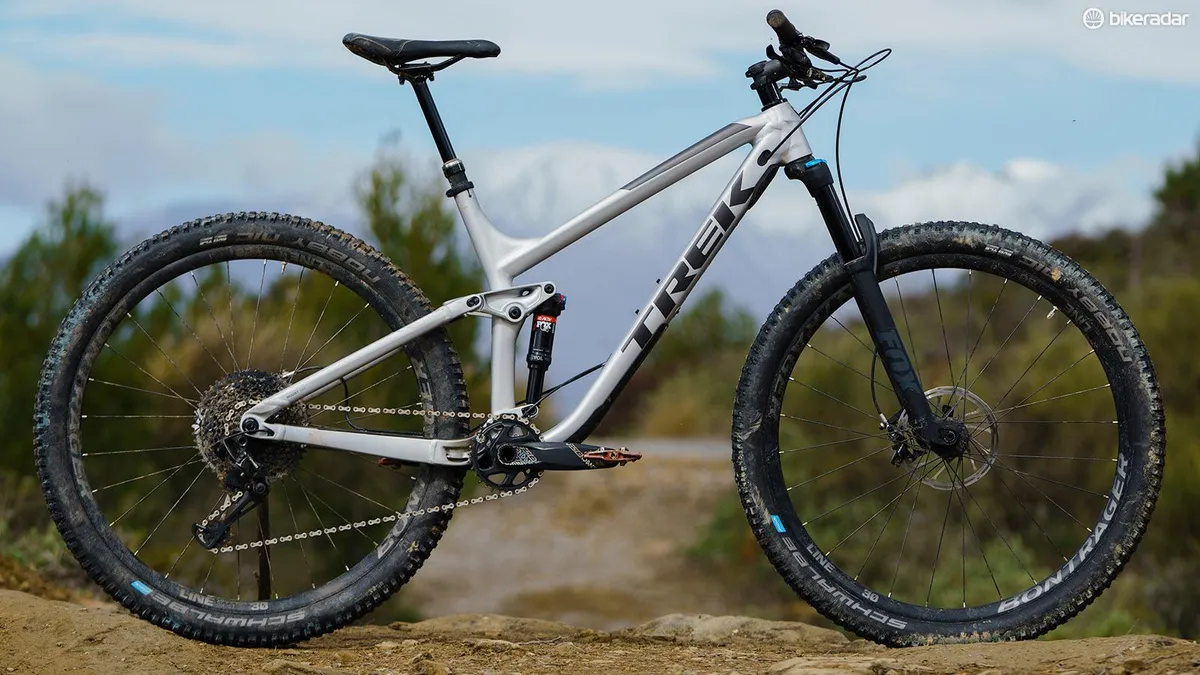The Trek Fuel EX 8 29 is a bike with a lineage going back to cross-country racing. This DNA shines through, but without the drawbacks that this can bring — the Fuel EX is a genuine trail bike.
- The Trek Fuel EX 8 29 is one of our Bike of the Year bikes for 2018. To read reviews of the other contenders and the categories tested across road, mountain and women's bikes, visit our Bike of the Year hub.
Trek uses its ABP linkage design on this aluminium frame, with a rear pivot planted around the rear axle. This, combined with the custom RE:aktiv shock delivers a bike that not only climbs well, but can handle the descents too.
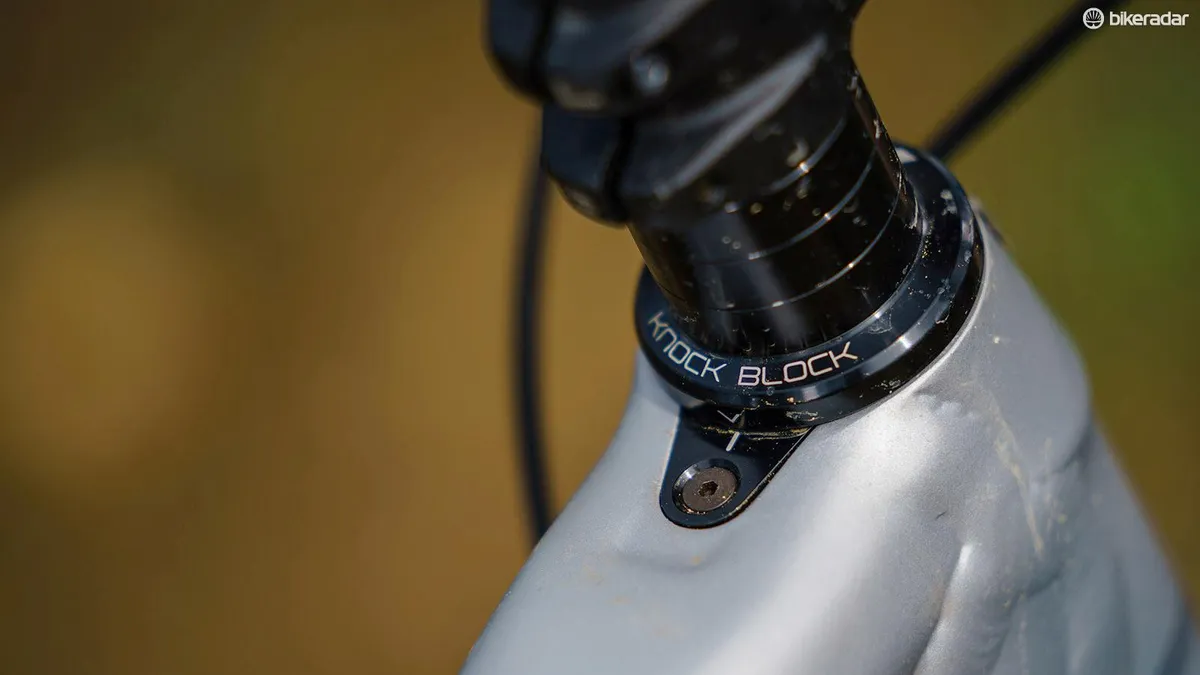
The RE:aktiv shock has an inertia valve inside it, which effectively gives an auto on-off pedal platform to prevent the shock from suffering too much influence from pedal inputs, while still remaining active on the descents.
In practice this works well, and it feels like there’s a subtle improvement in feel over some previous generations.
If you mash on the pedals you can definitely get the shock cycling through its stroke — it’s not a lock-out as such (there’s a low-speed compression lever for longer smooth climbs), but on pedally sections the bike feels very calm, composed and efficient.
While older versions had a slight clunk when the platform opened, the current generation is smoother, and there’s less of a noticeable feel when the platform gives way to the bike’s travel.
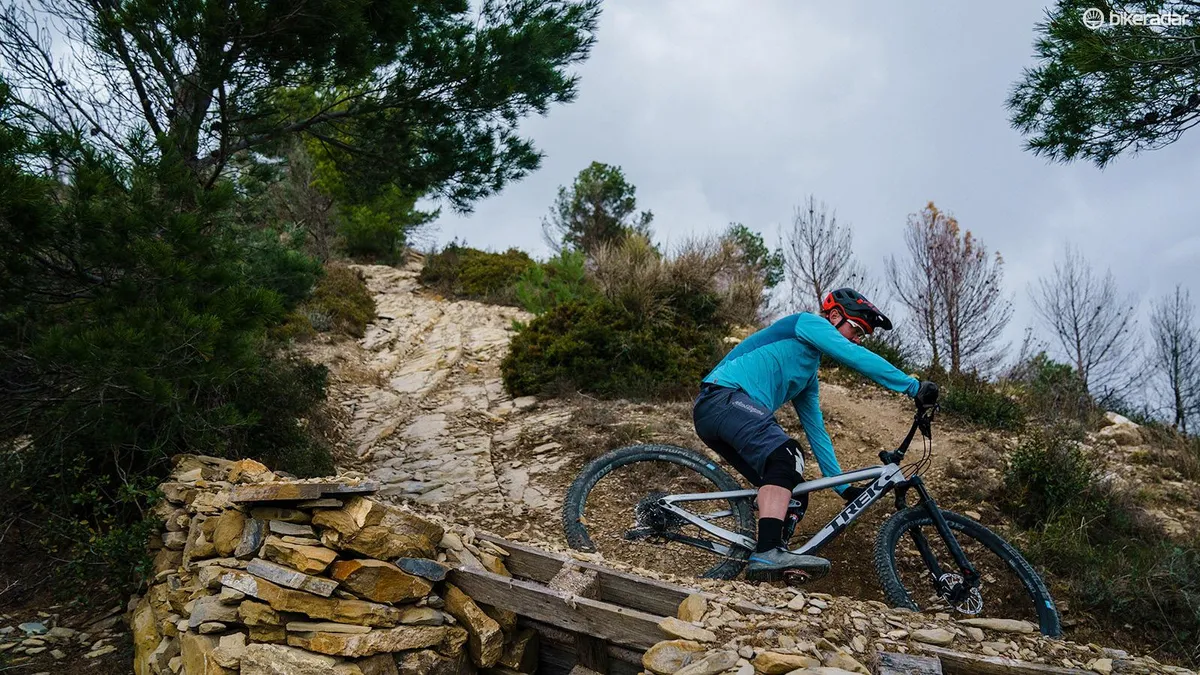
Once in the travel, the Trek is relatively active, happy to sit into the travel, rather than on top of it. The Fuel EX doesn’t feel super at home on the steepest or roughest of trails, but with a cross-country heritage, this isn't such an issue.
Riders who want to get the most from the bike could add a volume spacer or two to the shock for more progression out of the back end, as the faster and steeper you go, the more the bike likes to find its way to the depths of its travel. It’s here that the bike also feels like it gets knocked around a bit, losing some of that sure-footedness composure it has elsewhere.
However, on the trails it’s most suited to, the ABP suspension does a great job. The rear wheel tracks the ground well, boosting confidence, partly thanks to the fully floating shock that's bolted between the main swingarm and the rocker linkage.
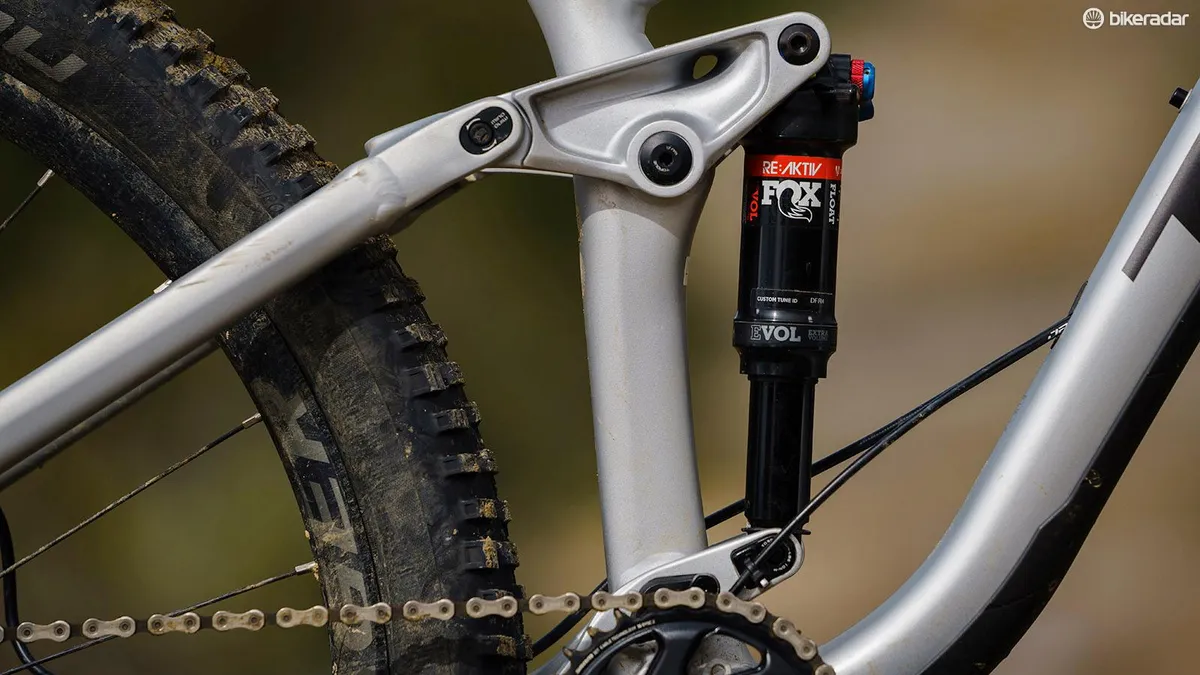
Despite its 14kg weight, it doesn’t feel lardy and it’s happy to be lifted and placed where you want it on the trail. It is, in fact, better suited to a more refined, precise ride, rather than just being pummelled into whatever is in the way — it's a bike that goes fast and rewards riders who are happy to place it where it’s needed.
The frame, combined with the planted feel through the suspension feels like a solid, tight package too. It’s not flexing everywhere, but fortunately avoids feeling harsh, though the front triangle’s stiffness results in a definite accuracy as you guide it through the chop. Thanks to this it’s a fast, stable and fun bike that seems to want to accelerate everywhere.
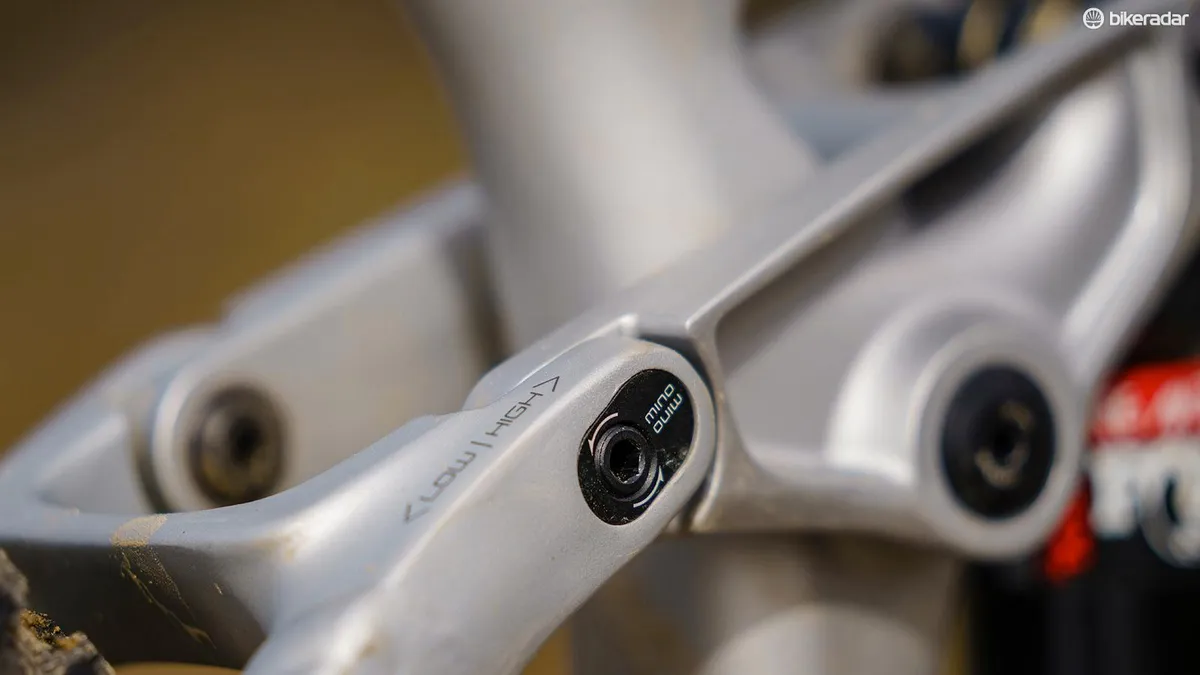
Through the use of its Mino Link you can change the geometry of the Fuel EX, though I generally kept it in the ‘Low’ setting, best for the 29in wheels.
There’s room for 650b+ wheels in there too, and at this point it might be wise to switch to the high setting to account for the lower ride height given by plus-wheels.
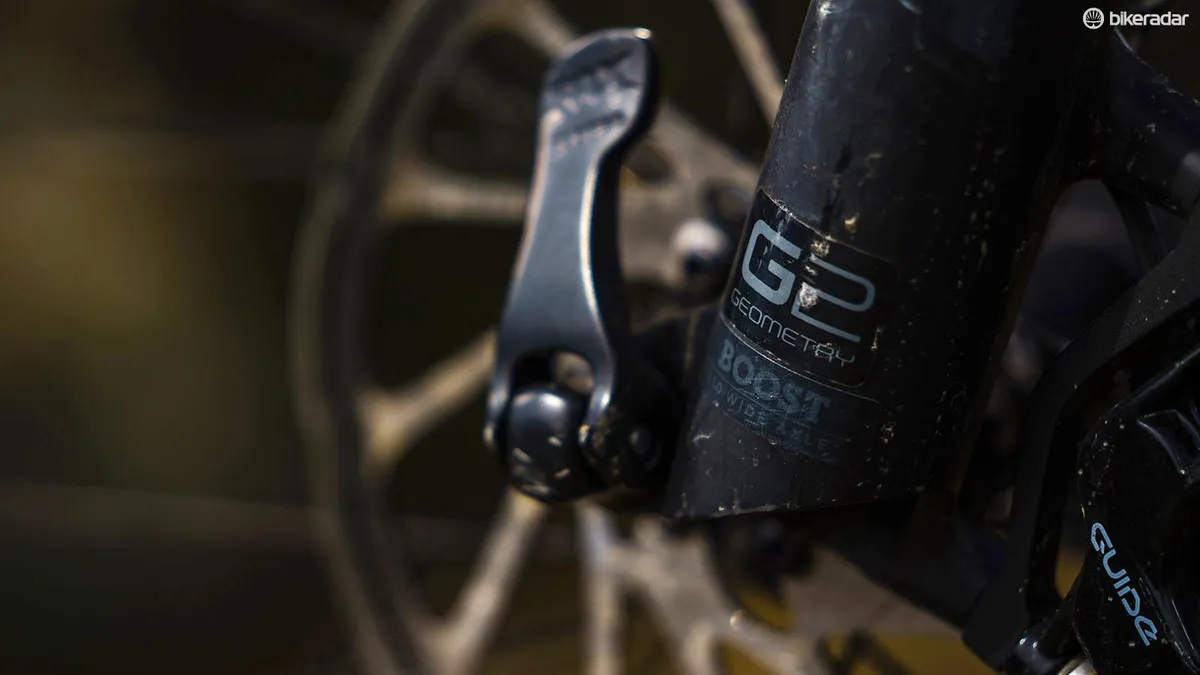
For £2,700 / $3,199 I feel the Fuel EX 8 29 is decent value for money. Trek uses a lot of its in-house Bontrager kit, and generally this is no bad thing.
The Line Comp 30 wheels don’t feel heavy or wooden and the cockpit is a decent shape (though I’d like a slightly wider than 750mm bar). The Line dropper post hasn’t proved the most reliable though, getting a touch sluggish in cold or grimy conditions.
Due to supply issues, the test bike came with Schwalbe Nobby Nic tyres, but Trek lists Bontrager SE5s as the stock tyre. I would like to ride the bike with the Bontrager rubber as the relatively hard compound Nobby Nics on the bike aren’t the grippiest and I feel I could get more out of the bike with slightly better tyres.
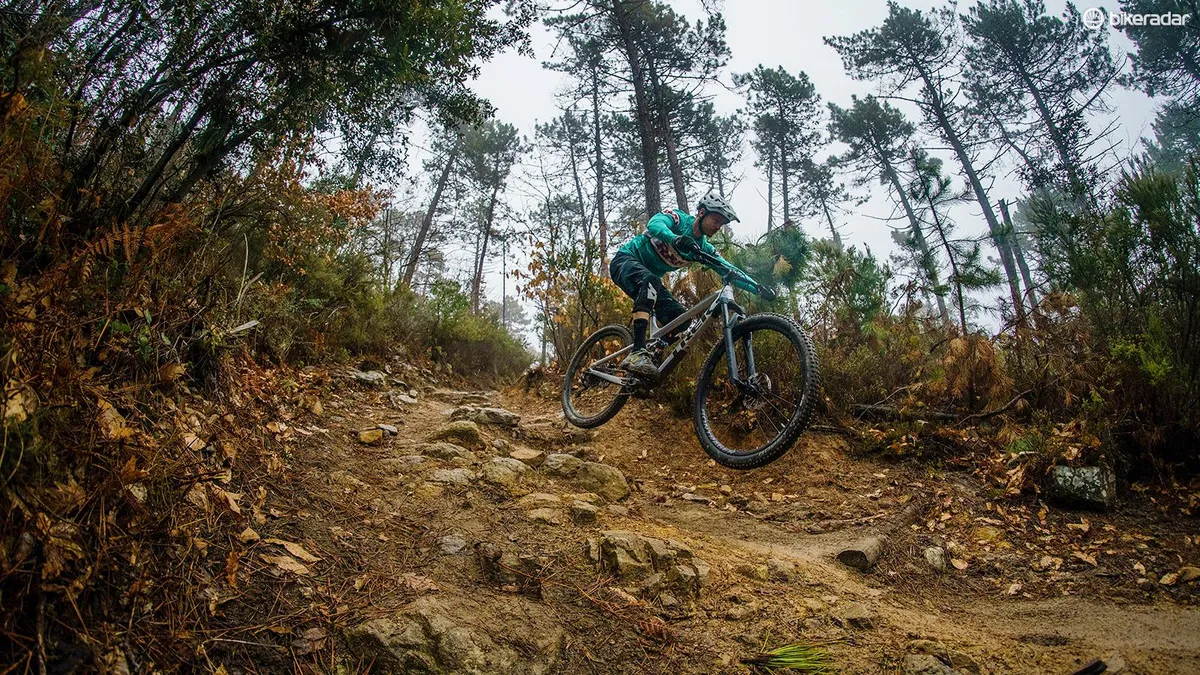
Up front is a 130mm Fox Rhythm 34 fork with the Grip damper. This is the base model 34, but one that I'm rarely disappointed to see. Okay, the spring curve from stock is a touch linear, but add a volume spacer or two and it’ll ramp up towards the end of the stroke.
However, the feeling through the bar is smooth and composed, without the slightly harsh or spiky feeling other ‘budget’ forks can have. This year’s Performance and Performance Elite level Fox forks feel better than last year's, but they don’t feel drastically better than the Rhythm 34s here.
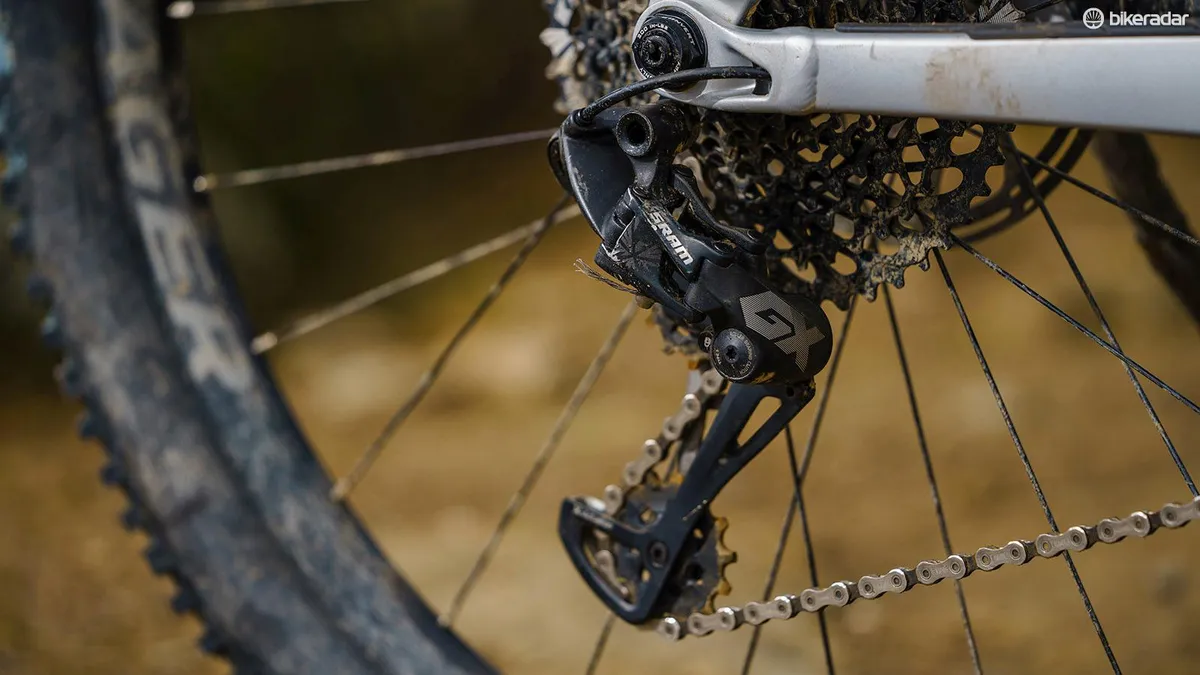
SRAM’s Guide R brakes offer decent braking power for a bike such as the Fuel EX, and the GX Eagle groupset now has to be regarded as the benchmark trail groupset.
Trek also offers an XT 2x11 option for the same money in some territories, though I feel the GX Eagle is the one to go for.
Also consider...
If you're looking for alternative options, have a look at the following list. Each bike has been thoroughly tested and robustly reviewed. Click on the links for the full review.
- YT Jeffsy 29 CF
- Norco Sight A2 29
- Canyon Spectral CF 9.0
- Orbea Occam TR H10
- Marin B17 3
- Transition Scout NX
- Commencal Meda TR V4.2 Essential
- Santa Cruz Tallboy Alloy R
- Juliana Joplin R
- Specialized Rhyme Carbon Comp 6Fattie
- Canyon Spectral WMN CF 9.0 SL
- Yeti Beti SB5 C-Series XT
- Scott Contessa Spark 910
- BikeRadar would like to thank Life Cycle Adventures, Sanremo Bike Resort, MET Helmets, Bluegrass Eagle Protection, Mercedes Benz and Brittany Ferries for their help and support during our Bike of the Year test.
